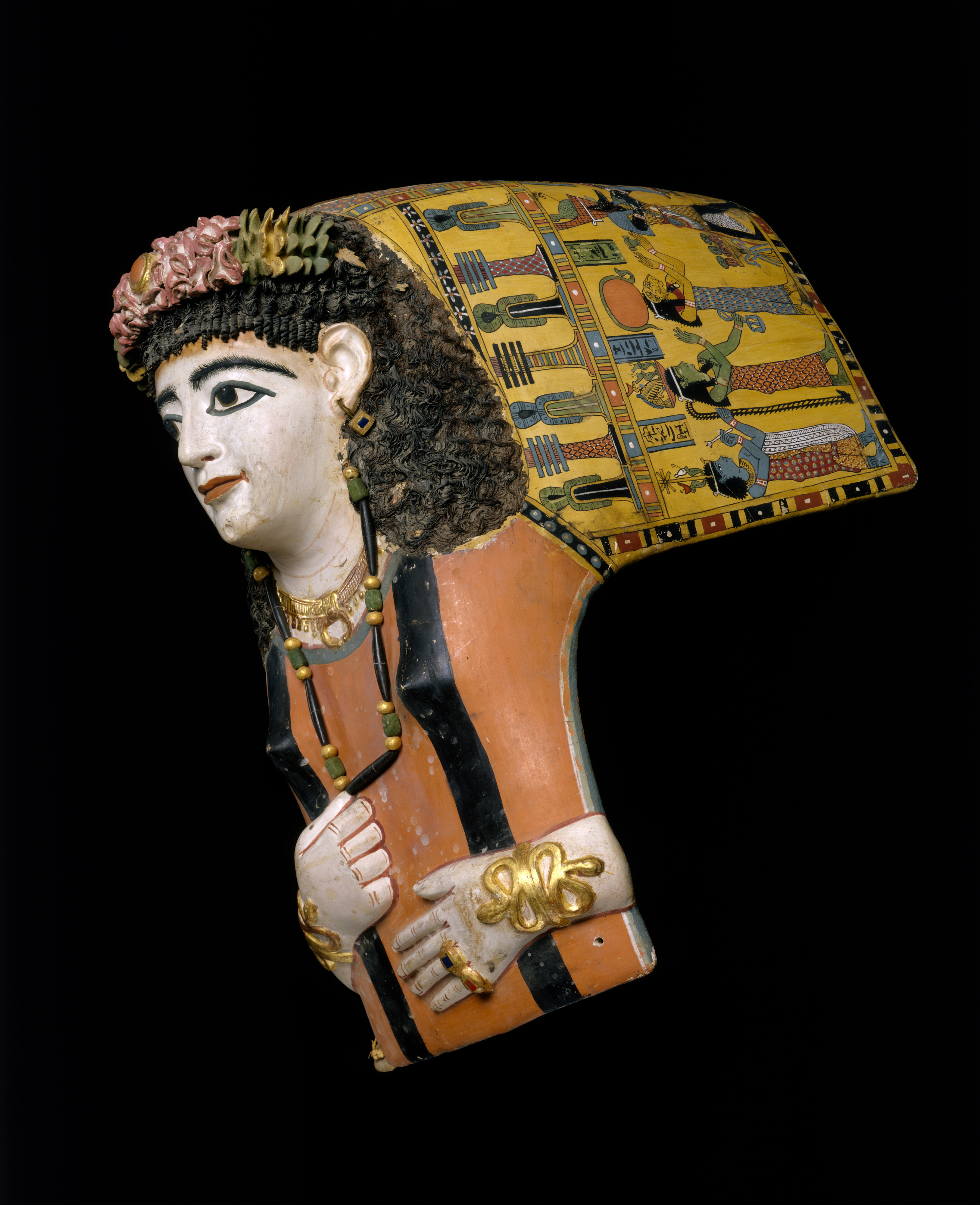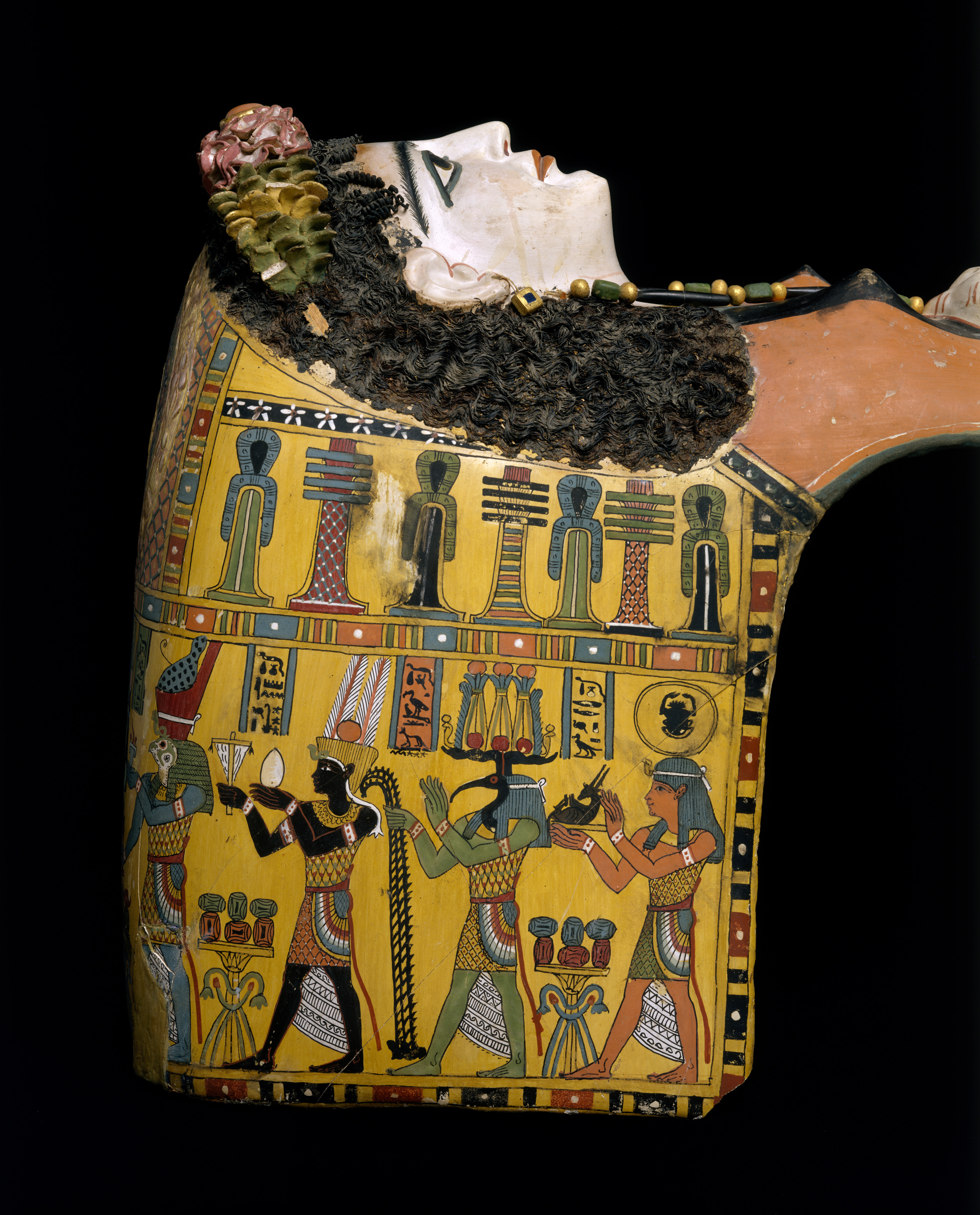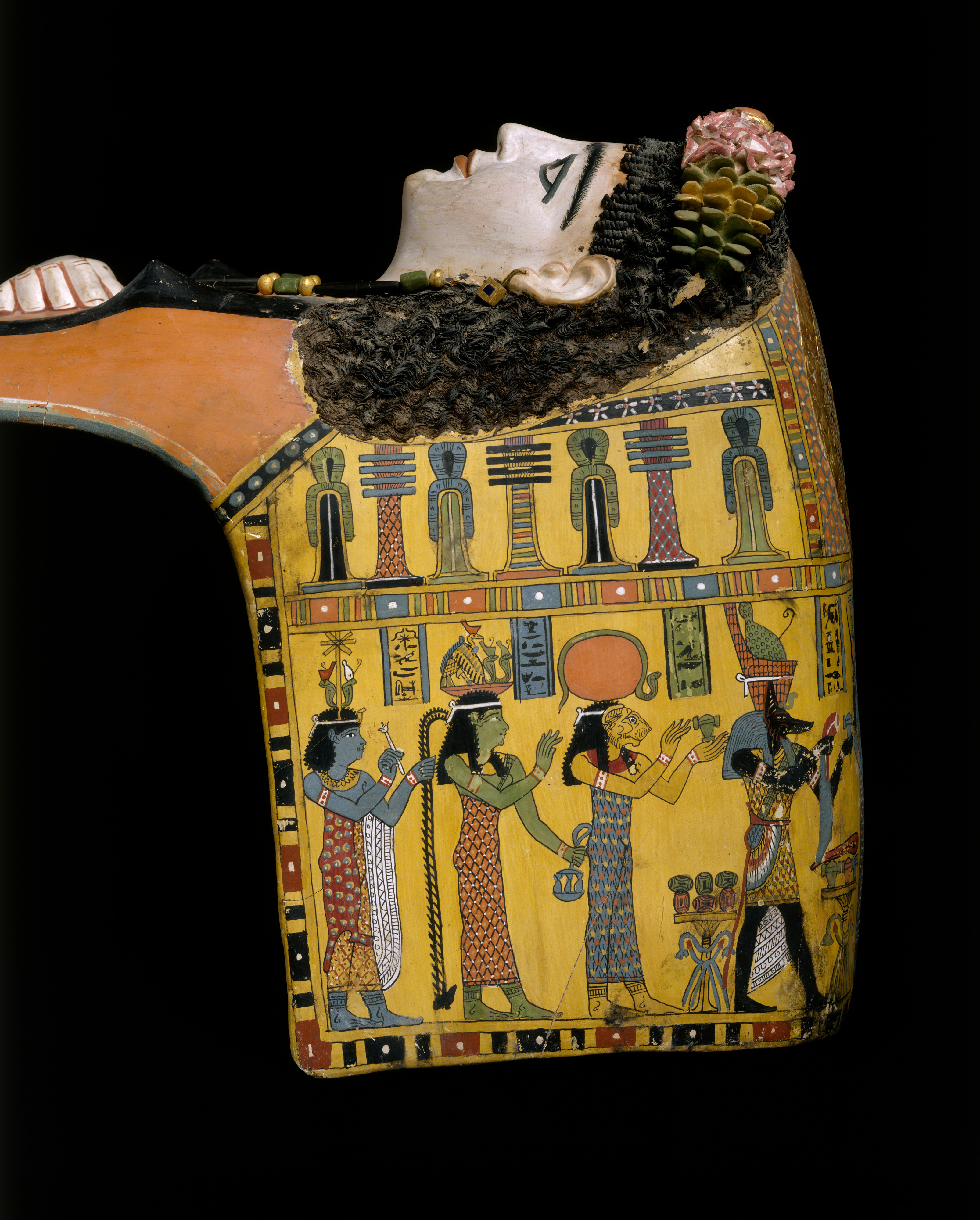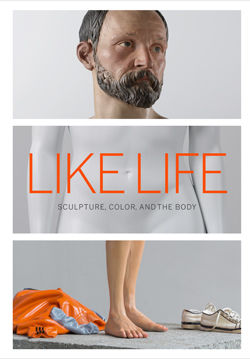Mummy Mask
Roman Period
Plaster masks seem to have been particularly popular in Middle Egypt. They develop of course from Egyptian traditions, but appearances could be strongly individualized and Roman fashions of hairstyle, dress and jewelry were followed to varying degrees. This mask is very similar to a group from Meir and almost certainly came from that site. The woman is represented as if lying flat upon her bier. She wears a long Egyptian-style wig made of plant fibers, a deep-red tunic with black clavi (stripes), and jewelry that includes a lunula (crescent pendant), and snake bracelets. At the lower edge of her tunic are two holes, which were used for attaching the mask to the mummy.
The back of her head is then represented as resting on a decorated support. Over the top of her head is a gilded wreath encircling a scarab beetle that represents the sun appearing at dawn, a metaphor for rebirth. The interstices and surrounding area are filled with a complex patterned ground, with the sides filled by a register of tyet knots and djed pillars, symbols of Isis and Osiris. A main register runs around the edge of the mask which centers on the god Osiris, the source of regenerative power, who is flanked by Isis and Nephthys. To the right of Osiris and the two goddesses are Horus, Amun, Thoth, and Re. To the left are Anubis, Tefnut, Hathor, and Seshat. These gods serve as witnesses to the deceased's resurrection.
#2210. Mummy Mask
Due to rights restrictions, this image cannot be enlarged, viewed at full screen, or downloaded.
This artwork is meant to be viewed from right to left. Scroll left to view more.









